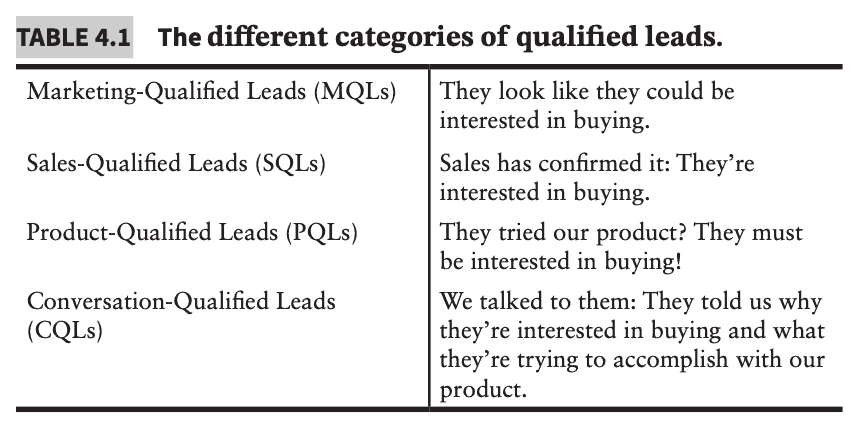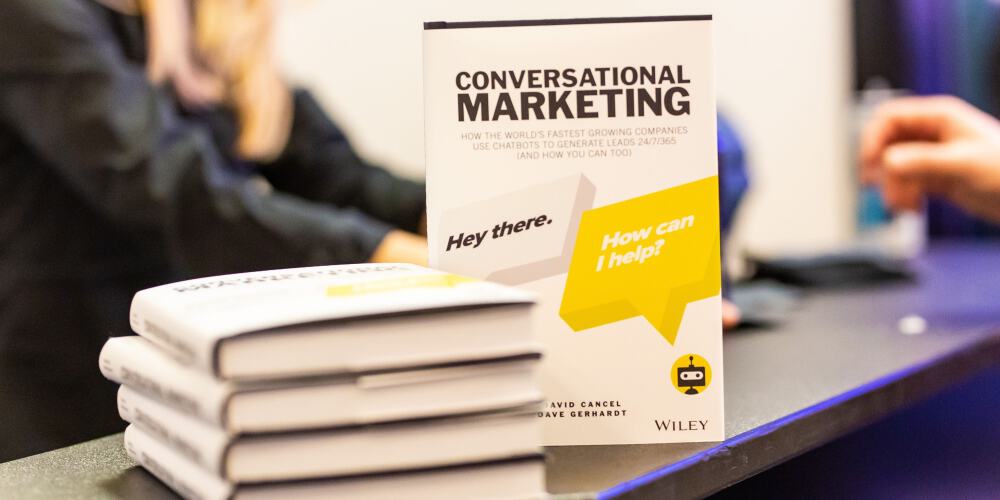
Editor’s Note: The following is an excerpt from Chapter 4: Replacing Lead Capture Forms with Conversations from the book Conversational Marketing: How the World’s Fastest Growing Companies Use Chatbots to Generate Leads 24/7/365 (and How You Can Too).
This book, written by Drift CEO, David Cancel, and VP of Marketing, Dave Gerhardt, forms the basis for Conversational Marketing as a practice. And shares insider strategies for implementing Conversational Marketing in a rapidly evolving sales and marketing landscape. You can order your copy of Conversational Marketing today here.
Read on more insights from chapter four ?
—
For companies that power their marketing and sales strategies with lead capture forms, one of the most common metrics they track is marketing-qualified leads (MQLs). An MQL is someone who matches your marketing team’s target criteria, which is usually based on some combination of demographics, firmographics, and behavior (like downloading an ebook). In other words, MQLs are people who have filled out lead capture forms and who, at least on paper, look a lot like your company’s buyer persona—a composite of your ideal buyer.
A common offshoot of the MQL is the sales-qualified lead (SQL). SQLs are essentially MQLs but with a few more boxes ticked off. In addition to matching your team’s target criteria, SQLs have typically expressed that they are ready to buy soon. So when it comes time to make outbound sales calls, SQLs are the leads that sales reps will call first.
For companies that offer a free or freemium version of their product, like we do at Drift, product-qualified leads (PQLs) are another metric we’ve typically tracked. And while many PQLs—free users who are spending time inside your product—do end up converting into paying customers, product usage alone doesn’t guarantee that someone’s a good fit to buy. Without knowing the intent of a lead, without understanding a lead’s underlying reasons for wanting to buy, it seems hard to consider that lead qualified.
Introducing the Conversation-Qualified Lead (CQL)
The reason why MQLs, SQLs, and PQLs all ultimately fail as metrics and as systems for measuring lead quality is that they’re all based on external observation. They rely on looking at people’s behaviors, from a distance, and drawing conclusions from the data you’re able to collect.
At Drift, after we replaced our lead capture forms with conversations, we quickly discovered that there was a better way to figure out whether a lead was ready to buy: We’d ask.
Instead of forcing people to fill out forms, we’d engage with them right away, in real time. And after we understood why they were there, what problems they were trying to solve, and how they were planning on using our product to solve those problems, we could make an informed conclusion about whether or not they’d be a good fit. The ones who were a good fit we called conversation-qualified leads, or CQLs (see Table 4.1).
A CQL is someone who has expressed intent to buy during a one-to-one conversation with either (a) an employee at your company or (b) an intelligent chatbot. Unlike MQLs, SQLs, and PQLs, CQLs are based on what your potential customers are actually telling you, not on your assumptions.
And because those conversations happen in real time, CQLs end up moving through your marketing and sales funnel at lightning speed.

As Chris Willis, former CMO at Perfecto Mobile, told the Drift marketing team,
“Leads that come in through chat tend to have a higher velocity. So you’re able to solve the problem or meet the needs of the request in real time. So you think in terms of somebody coming to a website, and having a question, and filling in a contact us form. And they’ll hear back in 24 hours, or two days. . . that problem might not be there anymore. If they’re able to initiate a conversation, so skip the form, and have a conversation in real time, we’re seeing that move very quickly.”
Giving leads the option to “skip the form” will not only help shorten your sales cycle, but it will also help you strengthen marketing and sales alignment.
—
Sorry to cut you off here, but we wanted to give you a taste of the fourth chapter of Conversational Marketing: How the World’s Fastest Growing Companies Use Chatbots to Generate Leads 24/7/365 (and How You Can Too), available for order now! Over the next few months, we’ll be dropping more chapters here on the blog.
Can’t wait? You can order your copy today here.







